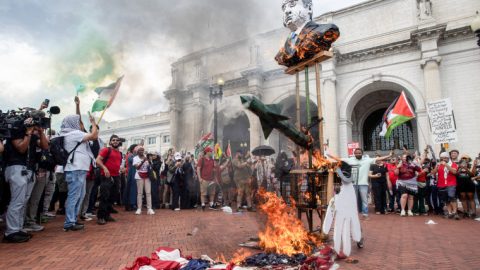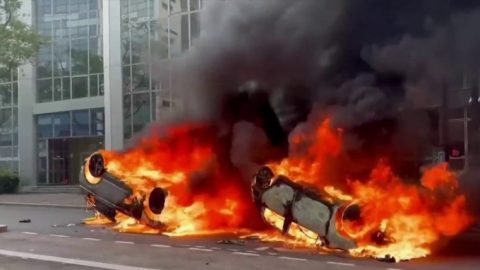Whatever the military results of the campaign, Israel has suffered a blow to its international image over the steep civilian toll in Gaza.
With 31,000 air strikes, the offensive on the densely populated enclave has caused massive damage to infrastructure and killed more than 30,000 people, two-thirds of them women and children, say Palestinian health authorities. Amid the worldwide outcry over Israeli tactics, the Biden administration has repeatedly appealed to Israel to scale back military operations and allow more access for humanitarian aid.
Israel, however, has refused to pull back and been reluctant to agree to a long-term cease-fire, saying the systematic murder of civilians in the Oct. 7 attack has altered the country’s mindset about how to respond to Hamas.
“We can’t leave the last Hamas stronghold without taking care of it. Obviously, we have to do it,” Israeli Prime Minister Benjamin Netanyahu said this week. “It has to be done. Because total victory is our goal, and total victory is within reach.”
Avi Melamed, a former Israeli intelligence official and negotiator, said eliminating Hamas entirely is “not a realistic objective” and that “Hamas is not going to disappear.”
But he said the key goal is to dismantle Hamas’ military reach and power, so that it can no longer operate as a small army.
Once the IDF advances into Rafah in the south, “we will be done with the phase of crushing the major spine of Hamas’ military capacities,” and the next step would be lower intensity warfare to sweep up the remaining elements of Hamas, Melamed said.
Some analysts and former U.S. officials say, however, that even a remnant of the group’s militants could remain armed and influential in the enclave. In that case, Hamas could potentially undermine more moderate political elements in Gaza and force Israel into an exhausting occupation.
“If Israel pulls out its troops and some other government comes in, that government could not survive in the face of Hamas opposition without significant outside help,” said Daniel Byman, a senior fellow at the Center for Strategic and International Studies.
In that scenario, with no reliable local security force to turn to, Israel could potentially be drawn into a fraught occupation with no clear way out, said Colin Clarke, a senior research fellow at the Soufan Group, a nonprofit focusing on global security issues.
“Hamas isn’t going to stop fighting, and also, they can’t go anywhere. They’re not leaving,” Clarke said. “So if the Israelis don’t leave, and Hamas doesn’t leave, what’s the endgame there?”
Clarke and other analysts say the situation in Gaza could end up resembling Israel’s troubled experience in southern Lebanon in the 1980s and ’90s. In 1982, Israel moved into southern Lebanon to evict the Palestinian Liberation Organization but stayed for nearly two decades, having failed to stamp out Lebanese and Palestinian militants.
“They withdrew from it (Lebanon) in 2000 unilaterally, and they never solved the problem. In fact, they left Hezbollah stronger than ever,” said Randa Slim, a senior fellow at the Middle East Institute think tank.
“I think they’re going to repeat the same failed experiment” in Gaza, she said.
Israel’s long-running military presence in southern Lebanon enabled the Iranian-backed Hezbollah militia to attract thousands of volunteers, Slim said, and the Israeli offensive in Gaza could have a similar effect.
Israel’s reliance on heavy aerial bombing in Gaza could also prove to be counterproductive, as it risks fueling resistance for years to come, according to Robert Pape, a military strategy and counterterrorism expert and political science professor at the University of Chicago.
“Israel’s military operations are producing more terrorists than they’re killing,” Pape said.









Recent Comments